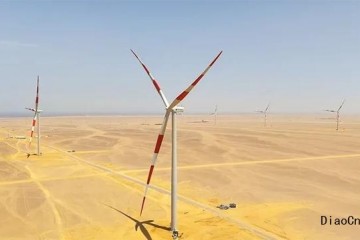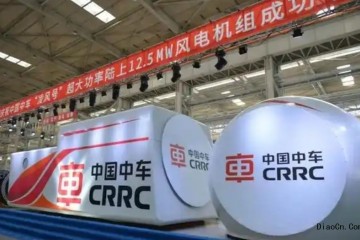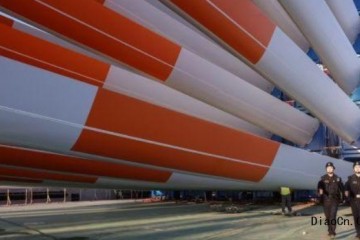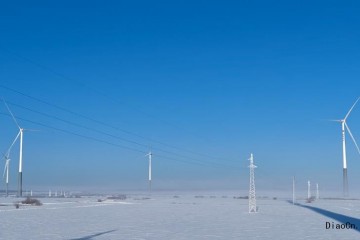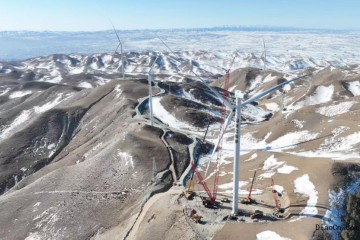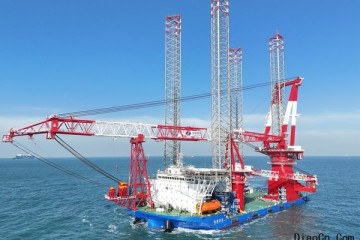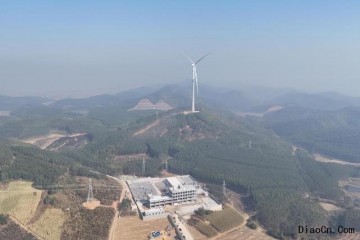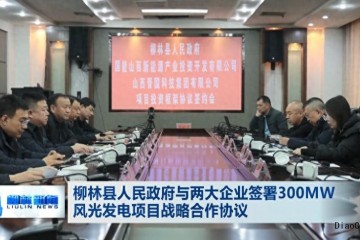2020年二级建筑工程师考试练习8加强和巩固市政公共工程
一、多选
1.盾构机主要选用原则不包括()。
A.适用性
B.可靠性
C.技术进步
D.经济理性
【答案】B
【解析】盾构机的选型原则主要包括适用性、技术先进性和经济合理性。
2.路基施工测量中,采用护桩距离( )。
A.钢尺
B.尺子
C.塑料尺
D.卷尺
【答案】一个
【解析】本题考查路基施工的测量要求。路基施工过程中,JD点是确定路线位置的唯一依据,施工过程中丢失或损坏、错位在所难免。为了正确快速地找到它的原始位置,有必要安排系船柱。护桩距离应使用钢尺。
◀扫一扫积分▶
高频容易出错的试卷▶

◀章节模拟试卷
真实模拟测试预测纸▶
◀历届真题分析论文
强化巩固练习纸▶
◀考前冲刺测试
扫码进入烧题库
第二建设题库下载
2020年二级建造师备考资料征集、教材解读、题库实践等,加网校老师个人微信【】,老师会回答问题!
3.在城市污水处理厂中,设置初沉池的主要目的是为了更好的去除污水中的无机物,所以一般安装在生物处理结构的()处。
后面
B.front
C.边
D.正反两面
【答案】B
【分析】初沉池对无机物的去除效果好,一般设置在生物处理结构的前面。
4.石灰稳定土的强度随着( )的增加而增加。
A.石灰用量
B.石灰土的年龄
C.水分含量
D.紧凑性
【答案】B
【解析】本题考察石灰稳定土的基层。石灰稳定土具有良好的板材性能,但其水稳定性、抗冻性和早期强度不如水泥稳定土。石灰土的强度随年龄增长而增加,且与养护温度密切相关,低于5℃时强度几乎不增加。
5.现浇连续墙施工中,泥浆的()平衡地下水土压力,形成泥皮,保持槽壁的稳定性。
A.自重
B.一致性
C.液柱压力
D.防水
【答案】C
【分析】现浇连续墙施工中,泥浆液柱压力平衡地下水土压力,形成泥皮吊车出租,保持槽壁稳定。
6.当水文地质条件差、路基土壤水分较高的土扦插时,应设置( )。
A.排水底座
B.沥青稳定砾石基层
C.排水垫
D.半刚性坐垫
【答案】C
【解析】本题考察基层垫底的设置条件。在季节性冻土区,当路面总厚度小于最低防冻层厚度要求时,根据路基干湿类型和土质不同,垫层厚度不同;对于水文地质条件较差的土扦插,当路基土壤水分较高时,宜设置排水垫;当路基可能有不均匀沉降或不均匀变形时,应加设半刚性垫层。
7.浅根树木生存和栽培的最小厚度为( )。
A.30cm、45cm
B.45cm、60cm
C.60cm, 90cm
D.90cm,150cm
【答案】C
【分析】浅根树木生存最小厚度为60cm,栽培最小厚度为90cm。
8.在挡土墙的结构形式中,靠墙体自重抵抗土压力作用的是( )。
A.余额
B.钢筋混凝土支撑型
C.钢筋混凝土悬臂
D.重力
【答案】D
【解析】本题考察挡土墙的结构形式和特点。重力式:(1)依靠墙体自身的重量来抵抗土压力的作用;
(2)在墙后设置少量钢筋,加宽墙趾(必要时设置少量钢筋)或在底座设置榫头抵挡滑动;(3)可以减少墙体厚度,节省混凝土用量。
9.池壁正常厚度,池壁厚度:高度约为()。
A.1:10
B.1:11
C.1:12
D.1:13
【答案】C
【解析】对于正常厚度的池壁(池壁厚:池壁高度约为1:12),池壁模板应支撑至池壁腋角以下200-300mm一次屋顶。
10.压力管道水压试验中实测渗水时,应使用( )。
A.注水法
B.衬里方法
C.分区检测方法
D.内窥镜
【答案】一个
【解析】本题考察水压试验的规定。在压力管道的水压试验中测量实际渗水时,应采用注水法。压力管道分为预试和主试阶段;判断试验合格的依据分为允许压降值和允许渗水值,根据设计要求确定。当管道中使用两种(或两种以上)管材时,应根据不同的管材进行试验。
11.分包企业签署的质量资质证明文件必须由( )的注册建筑师签字盖章。
A.分包企业
B.担任总承包项目负责人
C.担任分包企业质量负责人
D.担任总承包工程质量负责人
【答案】B
【解析】分包公司签署的质量资质文件必须由总承包项目的注册建筑师签字盖章。
12.质量保证计划由施工方编制()。
A.建设单位
B.构建工程师
C.政府人员
D.项目负责人
【答案】一个
【解析】本题考查质量策划的原则。质量保证计划由建设项目负责人编制,技术、质量、施工生产负责人按照企业规定和分工负责编制。项目。质量保证计划应体现从过程、子项目、子项目到单元项目的过程控制,应体现从资源投入到工程建设质量终检完成的全过程控制。质量保证计划应作为外部质量保证和内部质量控制的基础。
13.根据工程实践经验,当地层薄弱,墙体深度不深时,()。
A.墙底水平位移较小,墙边有较大地表沉降
B.墙底水平位移小,墙边地表沉降小
C.墙底有较大的水平位移,墙边有较大的地表沉降
D.墙底有较大的水平位移,墙边有较小的地表沉降
【答案】C
【分析】根据工程实践经验,当地层薄弱,墙体深度不大时,墙体底部出现较大的水平位移,墙体旁出现较大的地表沉降。
14.在热力管网中,限制管道在一定方向位移的支吊架为( )。
A.固定支架
B.滑动支架
C.导向支架
D.弹簧支架
【答案】C
【解析】本题考察支吊架的作用。弹簧支架的作用是在管道有垂直位移,不能承受水平载荷时使用;固定支架的作用是使管道此时不向任何方向移动;滑动支架的作用是让管道在那里有一个小的滑动;导向支架它的作用是限制管道在一定方向上的位移;刚性吊架适用于垂直位移为零的管道;弹簧吊架可承受三向位移和载荷。
15.之所以按照输气压力对输气管道进行分类,是因为输气管道的()与其他管道相比要求特别严格。
A.防爆
B.严格
C.易燃性
D.毒性
【答案】B
【分析】之所以按输气压力对输气管道进行分类,是因为输气管道的密闭性与其他管道相比要求特别严格,燃气泄漏可能引起火灾、爆炸、中毒或其他事故。
16.当管道结构顶面至路基的覆盖土厚度为() cm时,路基压实过程中应采取保护或加固管道结构的措施。
A.20~50
B.50~80
C.80~110
D.110~140
【答案】B
【解析】本题考察填筑路基的要求。填土高度内管涵顶面回土500mm以上时,方可使用压路机碾压。当管道结构顶面至路基的覆盖土厚度为50-80cm时,在路基压实过程中应采取保护或加固管道结构的措施。
17.在路基工程中,地下管线的施工必须按照( )的原则进行。
A.先地下履带吊对墙体的压力计算,后地上,先浅后深
B.先地下,后地上,先深后浅
C.先地上,后地下,先浅后深
D.先地上,后地下,先深后浅
【答案】B
【解析】小型构筑物的施工可以与路基(土)施工同时进行,但地下管线必须按照“先地下,后地面”的原则先完成并“先深后浅”,必须拆除地表水和地下水的施工。为土方工程建设创造条件。
18.根据《混凝土外加剂应用技术规范》的相关规定,低温施工时终凝时间不得大于()h。
A.10
B.12
C.13
D.15
【答案】一个
【解析】本题考察水泥混凝土路面施工的质量控制要求。外加剂的使用应符合下列要求:应经过配合试验,并应符合现行国家标准《混凝土应用技术条件》的有关规定,凝结时间不得少于3h,低温施工时终凝时间不大于10h。使用减水剂的目的是提高和易性,降低水灰比,节约水泥。
19.城市桥梁基坑施工时,基坑土方应为()。
A.分拣和堆叠
B.立即回填
C.随着挖掘和运输
D.堆叠备件
【答案】C
【解析】城市桥梁基坑施工过程中履带吊对墙体的压力计算,基坑土方应随挖、随运。
20.基坑地下水位一般采用( )监测。
A.水位计
B.全站仪
C.测斜仪
D.轴向测力计
【答案】一个
【解析】本题考查基坑地下水位监测方法。基坑地下水位监测方法有水位孔和水位计。基坑锚固力监测方法有轴向力计、频率接收器等。
二、多项选择
21.贫瘠土路基的处理按路基处理的作用机理可分为( )。
A.排水固结
B.土壤加固
C.碾压压实
D.换土
E.土壤改良
【答案】BDE
【解析】本题考察贫瘠土路基处理的分类。根据路基处理的机理,大致可分为三类:土壤改良、土壤置换、土壤加固。土壤改良是指采用机械(机械)、化学、电、热等手段增加路基土壤的密度,或加固路基土壤。这种方法是尽可能使用原路基。换土就是用砂垫等质量好的土代替软土层。土体加固是利用薄膜、绳网、板桩等对路基土进行约束二手吊车,或将抗拉强度高的加固材料放入土中,形成复合路基,加固和改善路基土的抗剪特性。
22.路基(土壤、石方)工程包括桩和标高测量、岩屑开挖、()、防护工程施工等。
A.平整路基
B.填筑路堤
C.路基压实
D.修复肩部
E.通过层洒油
【答案】ABCD
【分析】路基(土、石)工程包括测桩标高、开挖岩屑、填筑路基、平整路基、压实路基、修整路肩、建设防护工程。
23.土工合成材料有()函数。
A.排水
B.防渗
C.加固
D.隔离
电子保护
【答案】ACDE
【解析】本题考察土工合成材料的作用。土工合成材料是以合成聚合物为原料制成的各类产品,是道路岩土工程中使用的合成材料的总称。可放置在岩土或其他工程结构的内部、地表或各种结构层之间,具有加固、防护、过滤、排水、隔离等功能。应用时,根据其在结构中的主要功能进行选择和设计。
24.以下是( ),属于正阶梯圆开挖法。
A.环拱开挖
B.立式钢支撑,喷射混凝土
C.开挖核心土和下台阶,连接长钢支架,随时喷混凝土、后盖
D.一个衬里操作
E.二次内衬工程
【答案】ABCE
【分析】正阶梯环形开挖法的施工操作顺序为:用手动或单臂掘进机开挖环形拱→架设钢支架→喷混凝土。在拱门一级支撑的保护下,为加快进度,宜使用挖掘机或单臂掘进机挖掘核心土及下台阶,并连接钢支撑,喷混凝土,并随时封底。根据一次支护变形或施工布置,进行二次衬砌作业。
25.现浇钢筋混凝土支撑体系的特点是()。
A.混凝土硬化后刚度大,变形小,强度安全可靠
B.可调节轴向力,有效控制挡土墙变形
C.安装拆卸方便,可周转使用。预应力可以添加到支撑
D.对施工技术要求更高
E.围护结构长期处于无支撑状态,软土中被动区土体位移较大。若对变形控制要求较高,则需对被动区软土进行加固
【答案】AE
【解析】本题考察现浇钢筋混凝土支撑体系的特点。现浇钢筋混凝土支撑体系的特点是:混凝土硬化后刚度大、变形小、强度安全可靠、施工方便。在长而软的土壤中,被动区的位移较大。如果对变形控制要求较高,则需要对被动区软土进行加固。工期长,拆除难度大,爆破拆除对周边环境有影响。
26.控制泥水平衡盾排土量的方法有( )种。
A.体重控制
B.音量控制
C.泥浆流速
D.干砂防治
E.污泥流
【答案】BD
【解析】水土平衡盾构掘进量控制方法分为控制量和干砂量(干土量)控制。
27.根据去除污染物的方式不同,预处理方式可分为()。
A.沉淀法
B.吸附
C.活性污泥法
D.剥离法
E.氧化
【答案】是
【解析】本题考察了供水和污水预处理的方法。根据去除污染物的方式不同,预处理方法可分为氧化法和吸附法,氧化法可分为化学氧化法和生物氧化法。
28.计算土压力(土压力)控制值时,一般沿隧道轴线取适当间隔,根据各断面土体情况计算上限和下限,根据施工条件计算上限和下限。范围内设置。正确的设置方法是( )。
A.土壤稳定性较好的情况下采用较高的值
B.地层变形要求较小时取较低值
C.土壤稳定性好的情况下使用较低的值
D.土壤稳定性较差时使用较低的值
E.地层变形要求较小时取较大值
【答案】CE
【分析】计算土压力(土压力)控制值时,一般沿隧道轴线取适当区间,根据各断面土体情况计算上限和下限,设定上限限和下限根据施工条件而定。当然。土体稳定性好时取较小值,地层变形要求较小时取较大值。
29.自1950年代以来常用的垃圾处理方法()。
A.自然衰变型
B.堆肥
C.垃圾填埋场
D.填土坑
E.stacking
【答案】公元前
【解析】本题考察1950年代垃圾的处理方式。我国城市垃圾(又称生活垃圾)处理起步较晚,基础设施较差。 1950年代以来,常用的垃圾处理方式有:堆放、堆肥、填埋。城市生活垃圾处理方式主要采用自然衰减式,埋于土坑、干塘、沟壑中。
30.HDPE膜防渗技术的核心是HDPE膜的施工质量,施工质量的关键环节是()。
A.HDPE薄膜产品质量
B.施工设备的有效性
C.每个过程都紧密相连
D.严格执行检验频次和质量标准
E.施工后注意保养
【答案】ABD
【解析】施工质量的关键环节是HDPE薄膜的产品质量和专业团队的资质和水平,包括设备使用的有效性、工艺验收的严肃性和施工的合理性季节。
三、案例分析题
(一)
【背景资料】
在城市供水工程中,总承包商将供水管道工程分包给具有相应资质的承包商。
分包商在施工中遇到的一些情况如下:
情况一:大型球墨铸铁管采用原土基础。
情况2:球墨铸铁管接口采用手动推入式接口。
案例3:承插式铸铁管接头材料使用的石棉必须是4F粉状石棉棉。
情况4:使用石棉水泥界面时,先将石棉和水泥按2:7的比例混合,然后加水。加水量适中。采用四填八打法,逐层填实压实。
(二)
【背景资料】
某路桥工程公司承接某城市桥梁工程的施工任务。
在预应力筋施工过程中,路桥工程公司通过计算确定截断长度,采用预张拉法拉伸预应力筋,并设置专人负责施工的设备和仪器。预应力使用管理,并制定定期维护和校准制度。
在大体积混凝土墩基础施工过程中,为保证工程质量,承包商采取了一系列措施,对原材料和施工工艺进行控制和预防。
【问题】
1.预应力筋的常见类型有哪些?
【答】常见的预应力筋有钢丝、钢丝和热处理钢筋。
2.计算预应力筋截断长度时应考虑哪些因素?
【答】计算预应力筋截断长度时,结构的槽道或基座长度,锚固夹具的厚度,千斤顶的长度,焊接接头或墩头的预留量,应考虑冷拉伸的长度和弹性回缩。值、拉伸伸长率值和暴露长度。
3.预应力筋应该用什么方法截断?
【答】预应力筋的切割应使用切割机或砂轮锯,不宜使用圆弧切割。
4.简述预张法施工过程。
【答】轻拉法的施工工艺是在预制构件时,先将预应力筋张拉在基座上,再将混凝土浇入模板中形成构件的一种施工方法。
5.预张拉预应力筋的一般操作流程是什么?
【答】预张拉预应力筋的一般操作流程是:调整预应力筋长度、初张拉、正式张拉、加载铺设。
6.大体积混凝土应该首选哪种水泥?说出四种水泥的名称。
【答】大体积混凝土应优先选用水化热较低的水泥。如大坝水泥、矿渣水泥、粉煤灰水泥或低强度水泥。
7.大体积混凝土桥墩基础分块浇筑应符合哪些规定?
【答】大体积混凝土墩基础分块浇筑时,应符合的规定为:
(1)地块布局合理,每块地块平均面积不小于50m2;
(2)每块高度不要超过2m;
(3)砌块之间的垂直结合面应平行于基本平面截面的短边履带吊对墙体的压力计算|2020年二级建筑工程师考试练习8加强和巩固市政公共工程,垂直于平面截面的长边;
(4)上下相邻层混凝土之间的垂直接缝应交错开槽,作为施工缝处理。
【问题】
1.一一判断分包商在施工过程中的做法是否合适。如果不是,请更正。
[Answer](1)情况1合适。(2)情况2合适。(3)情况3不合适。正确做法:套筒式浇注使用石棉铁管接头材料必须是4F无粉石棉绒。(4)第四种情况错误。正确做法:石棉与水泥的比例应为3:7。
2.哪种类型的供水管道一般采用原地基?
【答】在给水管中,铸铁管、小口径球墨铸铁管、预应力混凝土管和塑料管一般都使用原土基础。
3.球墨铸铁管用弹性橡胶圈密封接口有什么特点?适合什么样的管道施工?
【答】球墨铸铁管采用弹性橡胶圈密封接口的特点是接口密封性能好,对地面变形的适应性强,抗震效果好,接口在一定范围内不漏水。角落。适用于大半径弯头直接管道安装。
4.承插式球墨铸铁管包括哪些刚性接头和柔性接头?
[解答](1)承插式球墨铸铁管的刚性接口包括油毡石棉水泥接口、裙边石棉水泥接口、油毡膨胀水泥砂浆接口、裙边膨胀水泥砂浆接口、法兰接口和套管接口。(2)承插式球墨铸铁管挠性接口包括油麻绿铅接口、人字形挠性口和阶梯唇胶圈接口。
(三)
【背景资料】
桥梁工地的简支板梁架设由专业的梁分包团队承担。分包团队使用2台50t履带起重机,采用双吊方式架设板梁。架设跨梁时,突然一台履带起重机发生倾斜,板梁撞到另一台履带起重机的驾驶室,造成一名起重机司机当场死亡,另一人重伤。事故发生后,项目经理立即组织人员抢救伤员,排除险情,防止事故扩大,做好标记,保护现场,事故发生后第一时间向企业安全主管部门报告,包括事故发生的时间和地点。 、人员伤亡情况及事故原因初步分析。项目经理向上级汇报后,指派技术、安全部门人员组成调查组,对事故进行调查。公司安全部、公司负责安全生产的副总经理也赶赴现场参与调查。调查中发现以下现象:
现象一:项目部对分包商的安全施工资质和安全生产保障体系进行了审核,并进行了资质评价。分包合同中明确了分包商安全生产的责任和义务,提出了安全要求,但未查到监督检查记录。
现象2:项目部编制了板梁架设专项安全施工方案。方案明确规定,路基箱板应在履带吊下方全面铺装,路基箱板长边应与履带吊行进方向垂直,但路基箱板的两条长边铺设在履带起重机下的位置几乎与履带起重机的行进方向平行,这是造成事故的主要原因之一。
Phenomena 3: The safety technical disclosure record of the project department to the subcontracting team was found, and the signatures were complete, but the disclosure record of the person in charge of the subcontracting team to all the operators could not be found.
Phenomena 4: Carefully check the safety technical disclosure records, and do not find the details of the potential threats and evacuation measures brought by the incorrect laying direction of the subgrade box slabs to the operators.
Phenomena 5: The direct economic loss caused by the accident amounted to 500,000 yuan.
Through the investigation, the cause of the accident and the person responsible for the accident were found out, the person responsible for the accident and the employees were educated, and the person responsible for the accident was dealt with.
【Question】
1.What should be included in the accident report? What are the rules of the sign-off procedure? What level does the accident belong to?
[Answer] The accident report should include the process, cause, nature, loss, liability, handling opinions, corrective and preventive measures of the accident. The sign-off procedure is that after a safety accident occurs, the injured person or the person who first discovered the accident immediately uses the fastest means of transmission to report the time, location, number of casualties, and cause of the accident to the safety authority of the enterprise. The competent department of safety of the enterprise shall report to the competent government department according to regulations according to the number of casualties or direct economic losses caused by the accident. The accident is a Class 3 accident.
2.In the background information, what security controls are violated by each of the four phenomena?
[Answer] The safety control requirement violated in phenomenon 1 is a project that implements general subcontracting. The safety control is the responsibility of the contractor, and the subcontractor is subject to the management of the contractor. The contractor’s responsibility for safety production to the subcontractor includes: (1)Review the subcontractor’s safety construction qualification and safety production guarantee system, and should not subcontract the project to a subcontractor who does not have safety production conditions;( 2)The responsibilities and obligations of the subcontractor for production safety should be clearly defined in the subcontract;(3)Propose safety requirements to the subcontractor, and carefully supervise and inspect.
The safety control requirement violated by the second phenomenon is that the contractor should stop the work for rectification of subcontractors who are risky and reckless in violation of safety regulations. The subcontractor shall be responsible for the safety work of the construction site, earnestly perform the safety production responsibilities stipulated in the subcontract, abide by the contractor's relevant safety production system, and obey the contractor's safety production management.
The safety control requirement violated by the third phenomenon is that the project management department must implement a system of step-by-step safety technical disclosure, which extends vertically to all the team members.
The safety control requirements violated by the fourth phenomenon are the content of technical disclosure, which should be aimed at the potential hidden dangerous factors and existing problems brought by the operators during the construction of sub-projects.
3.According to the relevant provisions of accident handling, who else should be involved in the investigation?
【Answer】According to the relevant regulations on accident handling, the people involved in the investigation should also be personnel from the quality department and representatives of the enterprise trade union.
4.Is the incident handled comprehensively? Please explain why.
【Answer】The handling of the accident is not comprehensive. Reasons: Safety accident handling must adhere to the principle of "don't let go if the cause of the accident is unclear, the person responsible for the accident and the employee have not been educated, and the person responsible for the accident has not dealt with it, and no preventive measures have been formulated." No preventive measures were established in this case.
(四)
【Background Information】
A new sewage treatment project mainly includes unit projects such as sedimentation tanks and pumping stations. The reinforced concrete sedimentation tank is 50m long and 20m wide. The concrete design strength grade of the foundation floor and wall is C30, the impermeability grade is P8, the height of the side wall of the pool wall is 6.5m, and the thickness is 550mm. Structural design An expansion joint is set in the middle along the length of the pool wall. The bottom plate and side walls of the structure are poured in two steps, using pumped commercial concrete. In order to ensure the construction quality of structural engineering and improve the workability of concrete, the project department increased the calculated amount of cement from 324kg/m3 to 354kg/m3, and selected a slump of 25-27cm to increase the diffusion of concrete into the mold. Due to the delay in the excavation treatment plan of the foundation pit, the structural construction has entered July, the temperature on the day when the side wall was poured was 35°C, and the concrete test temperature was 28°C. After a truck of concrete was transported to the site, the slump loss was large due to the long waiting time, and it was difficult for the pump truck to pump. The operator asked the on-site construction worker to discuss whether to add a little water to restore the slump to ensure the pouring operation, but the construction worker did not make a decision. When the pouring was completed, the concrete on the pool wall was cured by spraying water on site. After the formwork was removed, it was found that there were several longitudinally distributed cracks with a width of 0.3mm.
【Question】
1.According to the background information, is the cast-in-place construction work appropriate? If not, write the correct method.
[Answer] The inappropriateness and correct practice of cast-in-place construction in this project:
(1)Disadvantage: Increasing the amount of cement improves workability, and also increases the heat of hydration.
Correct method: The original concrete mix ratio should be restored.
(2)Inappropriate: The slump of the wall concrete is 25-27cm, which is too large.
Correct practice: The slump should be appropriately reduced.
(3)Inappropriate: The temperature of the concrete in the form is 28℃, which exceeds the specification.
Correct practice: The temperature of the concrete in the formwork should be less than or equal to 25℃.
(4)Inappropriate: The operator asked the on-site construction worker to discuss whether to add a little water and restore the slump to ensure the pouring operation. The construction worker did not make a decision.
Correct method: The construction worker should refuse the operator's request, because the relevant technical regulations stipulate that it is strictly forbidden to add water to the concrete mixture.
2.Is the construction worker's on-site handling appropriate? If not, write the correct way.
【Answer】Constructors can’t be noncommittal. Adding water is essentially to change the water-cement ratio. The specification expressly prohibits adding water midway. On-site construction managers and operators should strictly follow the operating procedures, work instructions and technical disclosure documents. Construction shall not operate illegally.
3.Describe construction measures to prevent cracks.
[Answer] The construction measures to prevent cracks are as follows:
(1)On the premise of meeting the mixing ratio specifications and concrete technical indicators, appropriately reduce the amount of cement and water, reduce the water-cement ratio, improve the performance of concrete by using admixtures, and reduce the peak hydration heat.
(2)Strictly control the quality of concrete raw materials, admixtures and admixtures must have reliable performance, which is conducive to reducing the heat of hydration during concrete solidification.
(3)Avoid too large temperature difference between inside and outside of concrete structure, control the temperature of entering the mould not more than 25℃; avoid excessively high internal temperature of concrete, take measures such as extending the time of dismantling and external insulation. By reducing the temperature difference between inside and outside of concrete structure , reducing thermal cracking.
(4)On the premise of meeting the requirements of concrete transportation and storage, reduce the slump of the mold as much as possible, and vibrate in time after entering the mold to ensure neither leakage nor vibration.
4.How should the structural acceptance of large hydraulic structures be carried out?
【Answer】Large hydraulic structures are hidden works. The structural acceptance should be jointly held by the construction unit, the design unit, the quality supervision agency and other departments according to the requirements of the specification.
The climax of preparation for the 2020 second-level builder exam is coming. Friends who plan to take the 2020 second-level builder exam, hurry up and study for the exam! During the current epidemic period, classes are suspended and learning is not stopped. Let's join the online learning of the second-level constructor of the exam network!
Scan WeChat to get free tuition classes

Answering questions: Add online school teacher WeChat personal account [] Follow to answer questions one-on-one and get free courses
Hot push → All people are united to fight the epidemic, classes are suspended and learning is not stopped, and the second-level construction engineer course enjoys 20% off (Hubei 50% off) and 50% off the question bank
Preparation for customs clearance: The 2020 second-level constructor examination course has been launched, please click for details
The three major courses of the 2020 second-level constructor examination, tailored, breaking 72 points in 50 days, and helping customs clearance>>
National unified service hotline: fast contact channel
 客服热线:
客服热线:



